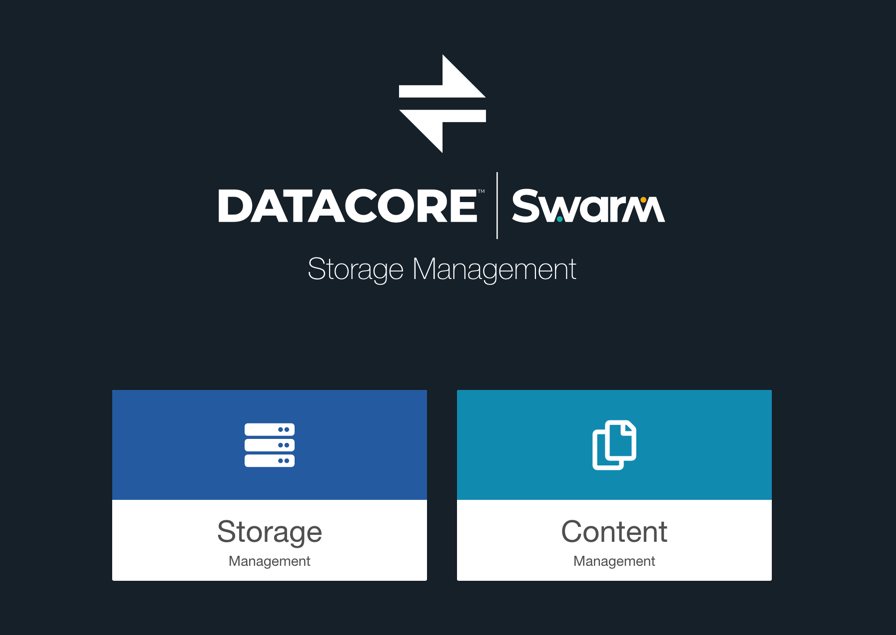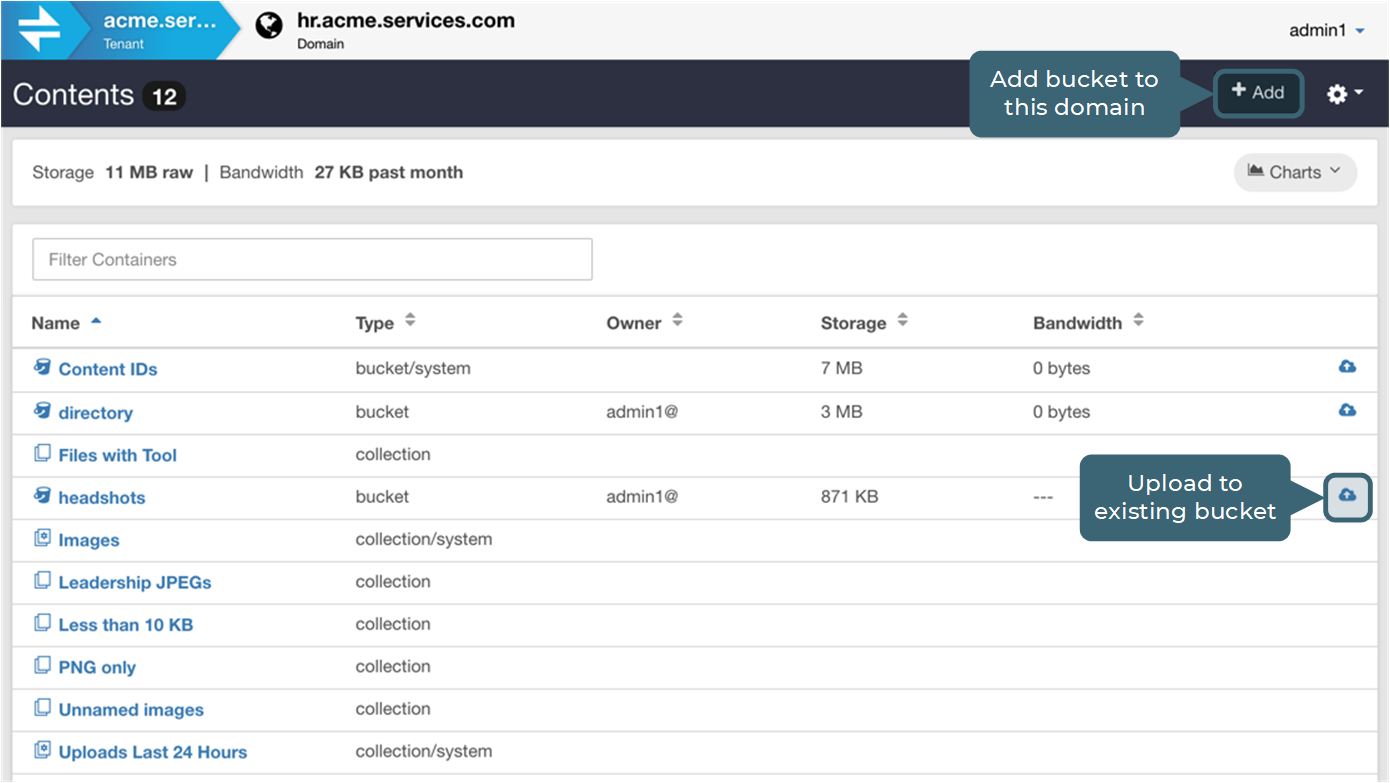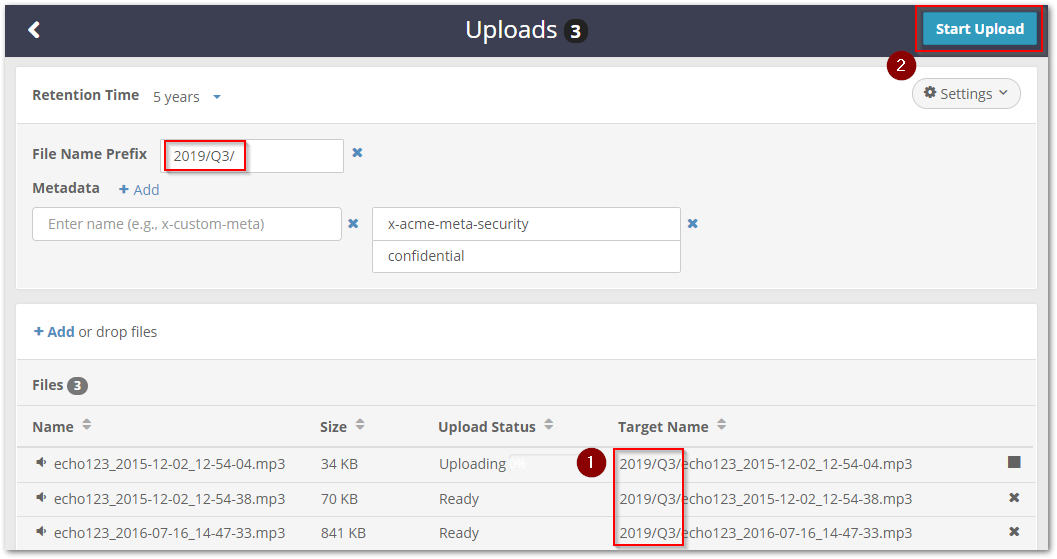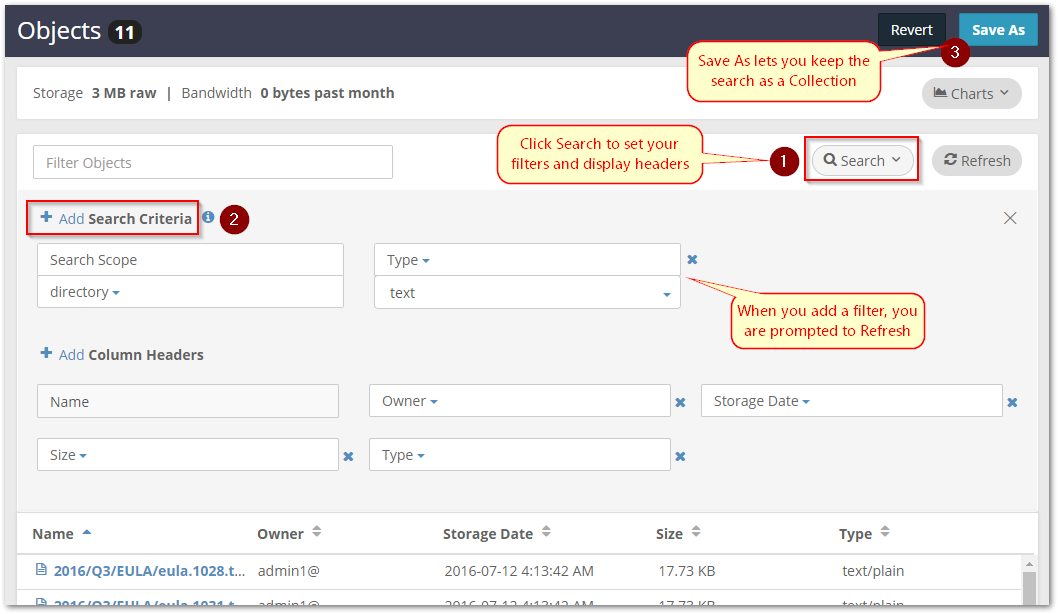| Table of Contentstoc | ||||||||||
|---|---|---|---|---|---|---|---|---|---|---|
|
The Content UI allows the creation, viewing, and management of tenants, domains, buckets, and objects from the convenience of a web browser.
| Tipinfo |
|---|
TipFor the best experience using the Content UI, use the latest Chrome or Firefox browsers. Safari browser is not supported. |
The breadcrumb navigation at the top shows the location in the hierarchy (which is how access to content is segregated and controlled). The hierarchy is based on one-to-many relationships:
...
Clusters (Swarm icon) can contain multiple tenants.
Tenantscan each contain multiple storage domains.
Domains can each contain multiple buckets.
Bucketshold named objects, which are files uploaded to Swarm by various clients and applications.
| Info |
|---|
ImportantWhat is visible in the Content UI is controlled and protected by access permissions. A Domain admin is not able to see anything (domains, tenants, clusters) outside of the domain they are authorized to manage. The DataCore icon link attempts to take users to the top-most level (domain, tenant, or root) allowed for them by applied permissions. It takes them to the storage domain they logged in to (the URL in the address bar); the user must navigate to the root level, even if the permissions do not allow them to list if the hostname is not a storage domain. |
Accessing the Content UI
The admin users for the Content UI are defined during the Gateway installationInstallation, via a root policy configuration file that grants full cluster permissions to a specific LDAP group or list of users.
Note
An authorized user must login. There is no anonymous access to the Content UI.
Cluster | Browse to the cluster's Content UI and use the login name and password created for the Root administrator to log in as a cluster administrator:
The |
|---|
| ||||||
Tenant or Domain | To log in as a tenant or domain administrator, browse to a domain's Content UI and log in with the admin credentials:
The Content UI opens to the domain’s page, from which the tenant's information can be accessed (if allowed) by clicking the breadcrumb menu. | |||||
|---|---|---|---|---|---|---|
Different Tenant or Domain | To log in to a different tenant or domain with the existing credentials, specify the tenant or domain after the user name:
|
Creating a
...
Tenant
From the list of Tenants, click the Add button.
Type in the name of the new tenant. (
...
See Naming Rules for Swarm.)
Press Enter or click the Add button again to save it.
Note
The SYSTEM TENANT System Tenant has no owner or configuration options; it is the permanent system-created tenant that manages any storage domain not associated with another tenant.
See Configuring Tenants.
Creating a
...
Storage Domain
Click on a tenant to view the list of domains within it.
Click the Add button to create a domain.
Type in the name of the new domain. (
...
See Naming Rules for Swarm.)
Select Add to save it.
See Configuring Domains.
Creating a
...
Bucket
Click on a domain to view the contents within it.
Click the Add button to create a bucket.
Clear the S3 Compatible checkbox if a non-S3-compliant name needs to be used.
Type in the name of the new bucket. (
...
See Naming Rules for Swarm.)
Select Add to save it.
See Configuring Buckets.
Uploading
...
Content
Click the Uploads button from the bucket view.
Set the Retention time if the default is not desired (Keep until deleted).
...
Click Settings to set custom options for file naming and metadata tagging:
| Info |
|---|
OptionalThis step is optional. |
Click Add to browse to local files or drag and drop them directly onto the upload area to queue them for upload:
Click the Start Upload button to launch the upload with these settings.
| Tip |
|---|
Tip (for step 4)Check the Target Name column to validate the final object names before uploading. There is no name prefix option when uploading files as Content IDs. |
See See Uploading Files.
Creating a
...
Search Collection
A new search is defined and run when a collection is added. The results can be saved as a named collection for future use after viewing the results.
Click on the domain name in the breadcrumbs bar to return to the domain.
Click the Search button to create a collection (which is a saved search).
Search for some of the uploaded data and click the Refresh button to rerun the search:
Filter Objects - for string searches on object names.
Search Scope - search the entire domain, unnamed objects (Content IDs), or a specific bucket.
+ Add Search Criteria - specify a new search filter, such as Type equal to the string
text.+ Add Column Headers - customize the view of the list of matched content on the bottom half of the screen.
Click the Save As button at the top right to save the search and display it as a collection for future use.
See Search Collections.
Resources
Located at the top right of the Content UI is the account name, which drops down a menu of resources:
...
Go to Location ... – opens a window for quick navigation to resources by name
About – reports the version of the software in use
Documentation – opens the searchable online help
Online Support – opens the Support site
Logout – ends the current session
See Go to Location.





